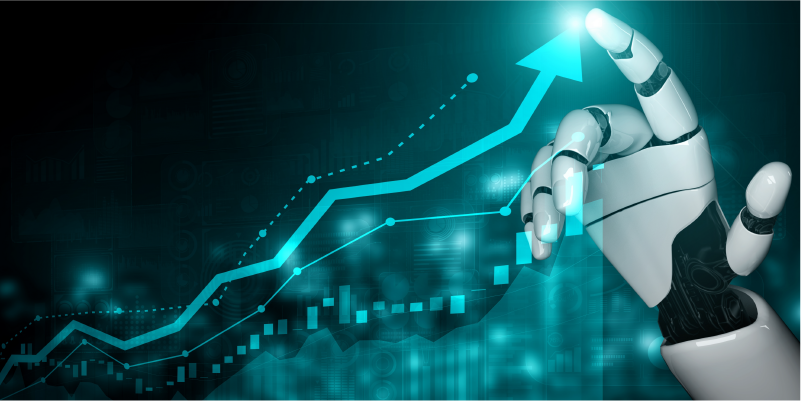In the fast-evolving landscape of finance, automated trading systems have emerged as powerful tools, revolutionizing the way investors approach the market. These algorithms promise efficiency and speed, executing trades at lightning pace that human traders could only dream of achieving.
However, beneath the surface of this technological marvel lies a complex web of risks and drawbacks that warrant careful consideration. As the allure of effortless profit beckons novice and seasoned traders alike, its crucial to unravel the potential pitfalls of relying on automated strategies.
From algorithmic failures to market volatility, the hidden dangers may overshadow the apparent benefits, raising an essential question: Are the conveniences of automated trading worth the potential risks? As we delve deeper into this topic, we will explore the intricacies involved, shedding light on the cautionary tales and challenges that often lurk in the shadows of this digital trading frontier.
Potential Risks of Automated Trading

Automated trading, while lauded for its efficiency and speed, carries a host of potential risks that can catch even seasoned investors off guard. One of the primary concerns is the reliance on algorithms, which, though designed to react swiftly to market changes, can sometimes misinterpret signals or fail to account for unprecedented events, resulting in catastrophic losses.
Moreover, the lack of human intuition in decision-making means that these systems may continue to operate under adverse conditions, exacerbating problems before any intervention can occur. An auto trading platform must be carefully monitored to avoid such scenarios, as these platforms can be vulnerable to technical failures like server downtimes, connectivity issues, and software bugs, which can not only derail a trading strategy but also lead to unintended positions that spiral out of control. Additionally, the market dynamics can shift rapidly, rendering previously successful strategies obsolete.
In a landscape where every millisecond counts, the implications of these risks can multiply, leading to a cascade of poor decisions that a trader may not be able to rectify in time. Ultimately, while automated trading offers enticing advantages, using an auto trading platform necessitates a careful and often cautious approach to mitigate these potential pitfalls.
Psychological Aspects of Automated Trading

The psychological aspects of automated trading are as intricate as they are critical, intertwining human emotions with sophisticated algorithms. Traders may initially feel a sense of liberation, entrusting their investments to algorithms designed to execute trades with precision.
However, this detachment can lead to an illusion of control, fostering overconfidence in the systems decisions. As market conditions shift unexpectedly, the automatic nature of trading can provoke anxiety, prompting individuals to second-guess the strategies that once seemed infallible.
Moreover, the inherent unpredictability of market behavior can unleashed a flurry of stress, where traders find themselves grappling with the fear of missing out on opportunities or, conversely, the dread of incurring losses. A psychological trap can ensue, one where traders oscillate between complacency and panic, revealing the emotional toll that accompanies reliance on automated trading systems.
In this dichotomy, the balance between trust in technology and the ever-present volatility of the markets remains a precarious tightrope walk.
Regulatory and Compliance Challenges
Regulatory and compliance challenges in automated trading are multifaceted and ever-evolving, presenting a minefield for traders and firms alike. Navigating the web of existing regulations, such as MiFID II in Europe or the SEC guidelines in the United States, requires an acute awareness of both local and global mandates. Failure to adhere to these complex rules can result in severe penalties, including hefty fines and restrictions on trading activities.
Moreover, the rapid pace of technological advancement often outstrips the regulatory frameworks in place, leaving gaps that unscrupulous actors may exploit. As algorithms execute trades at lightning speed, the risk of unintended market manipulation or erroneous trades escalates, raising ethical questions about accountability.
Amid this tumultuous landscape, firms must invest significantly in compliance infrastructure, including robust monitoring systems and legal consultations, to mitigate risks while remaining competitive. In this environment, the imperative to balance innovation with regulatory adherence becomes not just a challenge, but a critical component of sustainable trading strategies.
Conclusion

In conclusion, while automated trading platforms offer significant advantages such as increased efficiency and the ability to execute trades at lightning speed, it is essential to remain vigilant about the inherent risks involved. Factors such as algorithmic errors, lack of market adaptability, and the potential for emotional detachment can lead to costly mistakes for traders who over-rely on automation. Additionally, market volatility can further exacerbate these risks, resulting in unexpected outcomes.
Therefore, it is crucial for traders to adopt a balanced approach, integrating automated systems with thoughtful oversight and continuous learning to navigate the complexities of the trading landscape effectively. By understanding and managing these drawbacks, investors can maximize the benefits of automated trading while safeguarding against its potential pitfalls.


